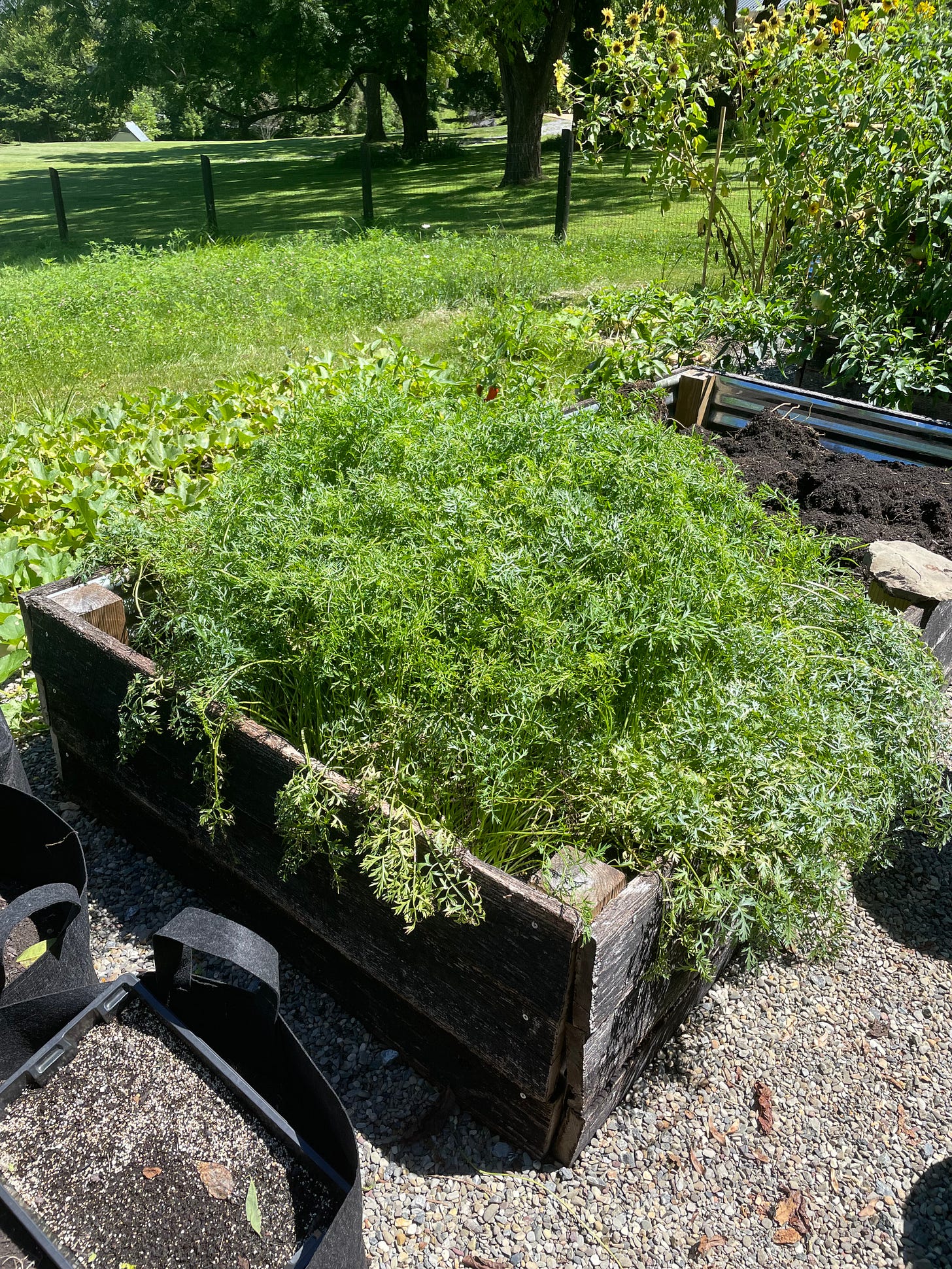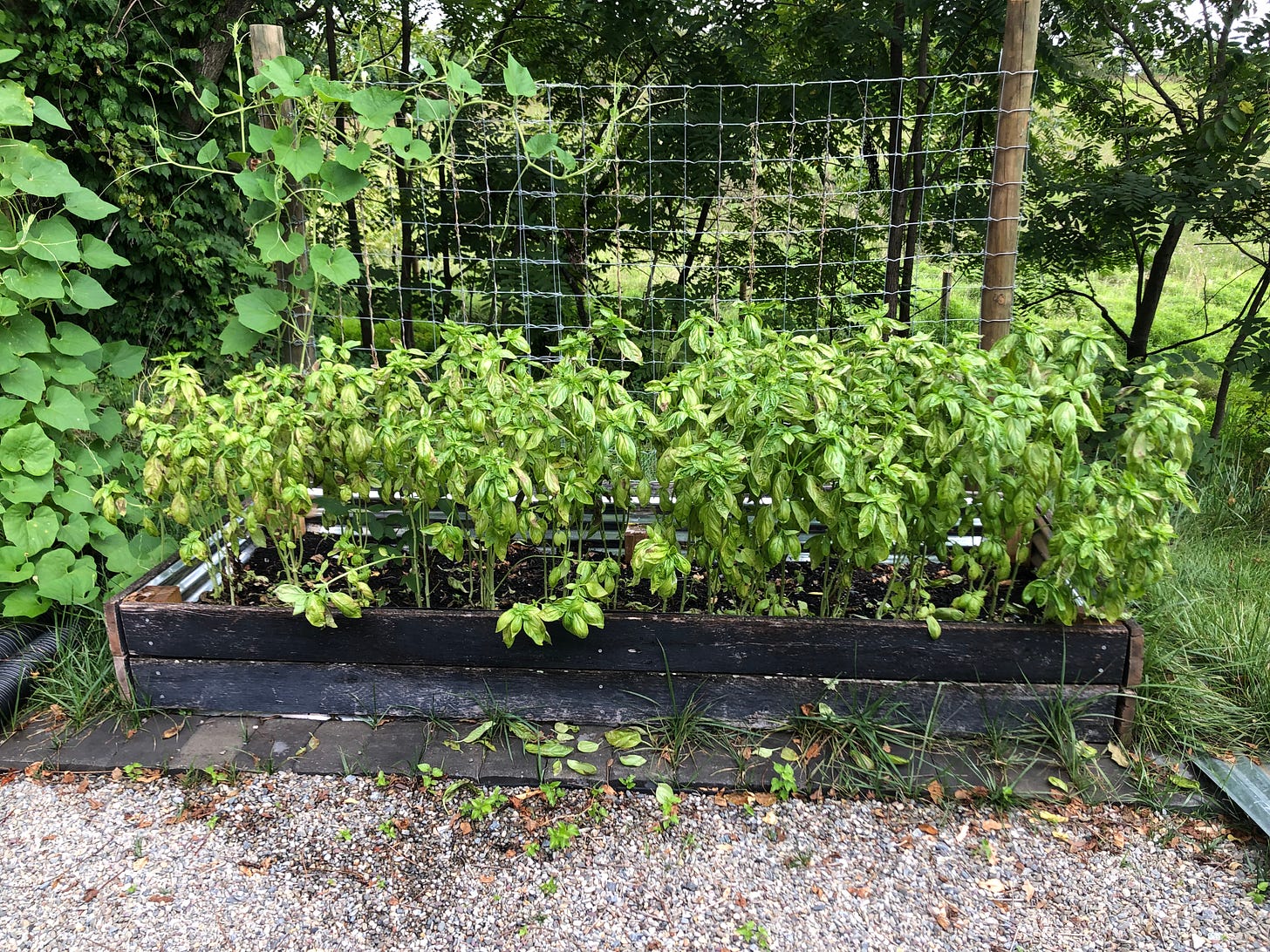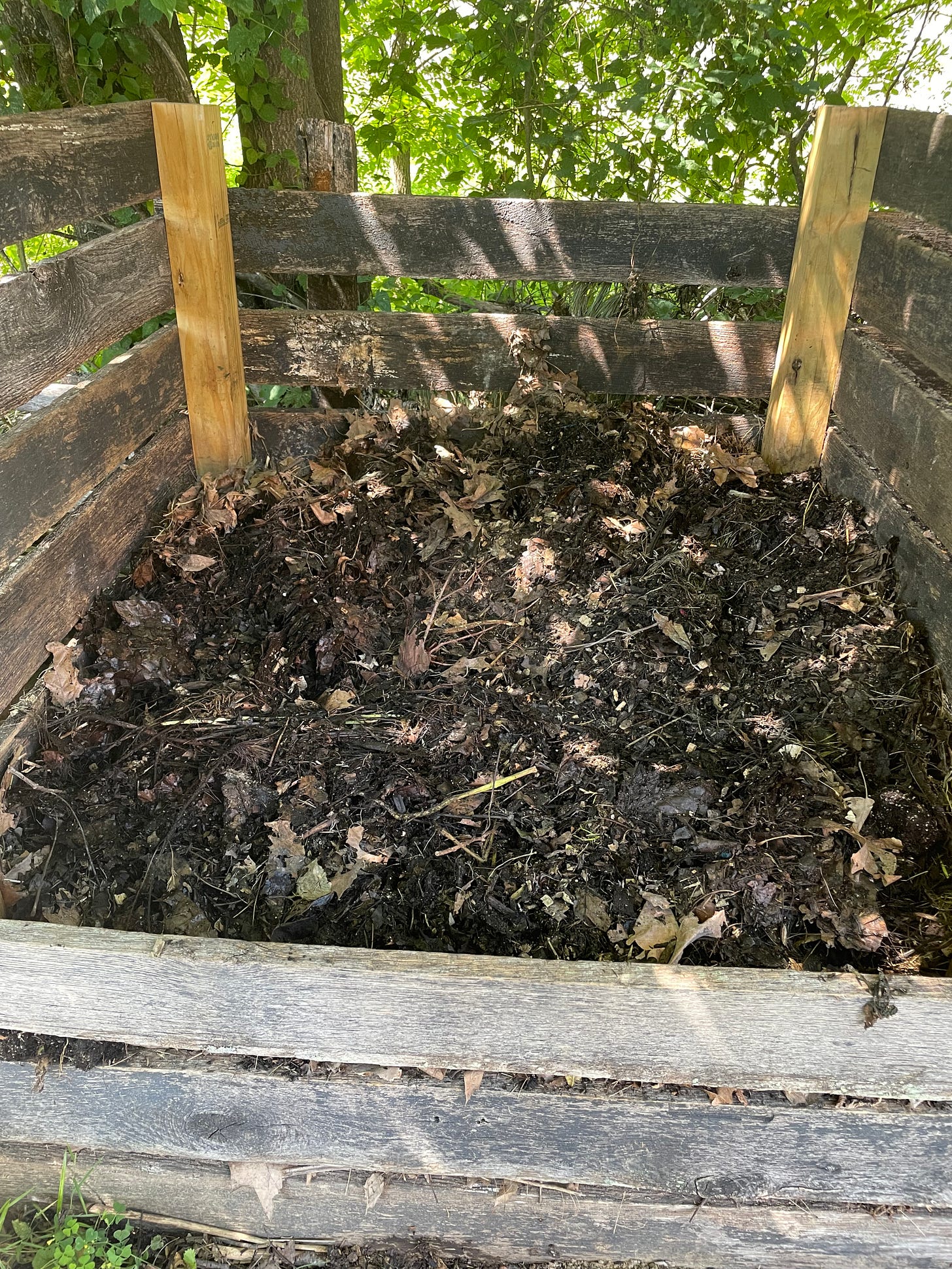August Update - Caution, Solar Blizzard
The sweltering heat of summer has come upon us with full force, and what felt like the mid-season has quickly become late season gardening. A good well has allowed us to apply 30 minutes of watering every morning, but multiple days of 90 degree heat and high humidity has made us relative strangers to the garden. But there have been some notable high points and a few lessons.
Tomatoes: Brandywine and Speckled Roman
We decided to compare the yield of greenhouse grow bags with plants grown in traditional raised beds. Both were started indoors under grow lights, moved to the greenhouse in pots, and then placed in their final bags/beds on the first of May. While the indoor tomatoes raced off to a great start, they soon began to get leggy and suffer in the 110 degree heat. It became clear that they had to move outside and receive the same watering as the beds. The bagged plants set little fruit and were soon surpassed by the outdoor plants. We’ve had, and continue to have, tremendous yields from bushy, six foot outdoor plants. Judicious pruning has helped to open up the structure and we are making several kinds of sauces with the Speckled Romans and eating Brandywines nearly every day.
Basil
Blink and you’ll miss it. We’ve had armloads of Basil for pesto and sauces, but even with some diligent topping, they’ve gone over in a matter of days. We are going to try a second sowing as it’s such a luxury to have around.
Gourds
I may have allowed too many flowers to fruit, but we do have a dozen or so of these Birdhouse Gourds that we’ll dry, drill an entrance, and hope to attract tree swallows and sparrows.
Carrots and Beets
Both have been great, and as a late-in-life convert, the beets are getting a second sowing this week. The main crop carrots may have been sown a bit too closely, and as multiple harvests throughout the year will attract an onslaught of carrot fly, we’ve left it a bit late. But we’ve harvested a good amount, and we are sowing a late season variety in our earlier lettuce beds.

Parsnips
They look quite good, and although one variety (Javelin) really outperformed the other (Albion), I think our yield will be good. We are planning a second sowing, but we’ll only know how well they taste after a nip of frost.
Compost
Big success here. Our first turn was this week and everything is proceeding to plan. I hope to spread the finished article in March, so that gives this already well broken down pile six more months to decompose. After a lot of research we’ve just been adding everything we can get our hands on, running the chipper off the tractor, and sprinkling grass clippings. It pains me to buy another piece of equipment, but I do want to add a shredder to the mix. The big ticket chipper is great with limbs up to about 4”, but hopeless with greenery and vines. I think we can really refine the process if we add nothing bigger than about 1” to the mix.
We are new to the idea of planting for late fall harvests, so this will be a new adventure. Meanwhile, our thoughts are turning to some of the more ambitious Autumn projects such as the big tree planting initiative with our Virginia Department of Forestry saplings.










